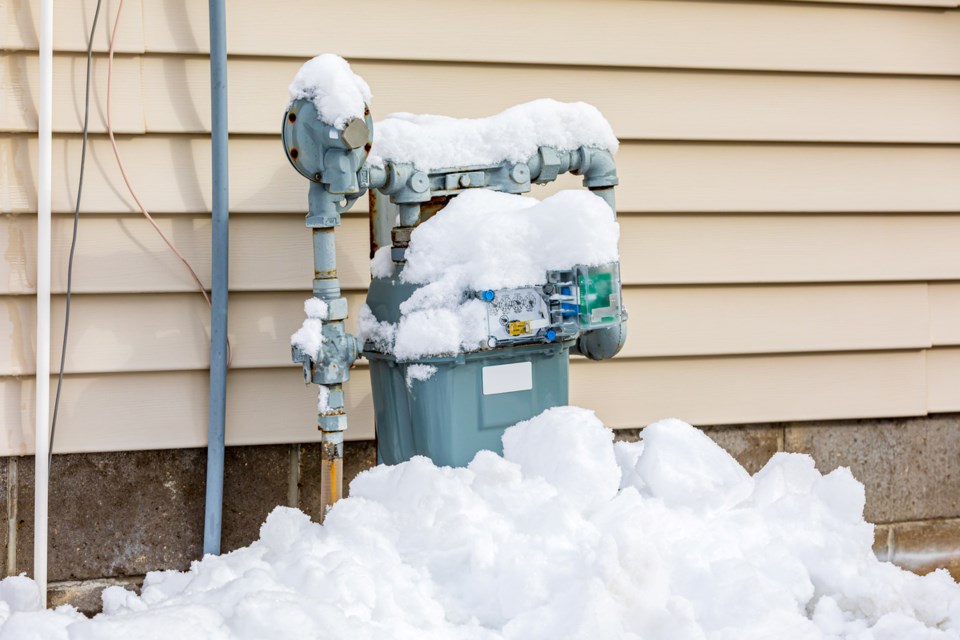Increasingly, we’re confronted by the energy “trilemma.”
That energy trilemma requires us to balance reliability, sustainability and affordability. Each component is necessary. They can’t be thought of or managed in isolation. As a critical energy provider for our customers, these are the issues we’re focused on as we support sa╣·╝╩┤½├Į’s energy transition.
The importance of reliability was underscored this summer when sa╣·╝╩┤½├Į residents leaned heavily on the power grid as a heat wave hit the province, pushing demand for electricity to near-record highs.
In parts of sa╣·╝╩┤½├Į’s Southern Interior where temperatures soared to 40 C, FortisBC electricity customers turned up their air conditioning systems to ward off the heat at their homes and businesses. On July 12, demand climbed quickly past the average summer-day usage of 434 megawatts to hit 714 megawatts—not far from the 764-megawatt spike in demand seen on June 29, 2021, during the heat dome.
Winter extremes put even more demand on our energy systems. On the coldest days of the year, the gas system delivers roughly 22,000 megawatts of peak energy, which is nearly twice as much energy as the provincewide electricity system.
The ability to meet such soaring demand not only speaks to the reliability of sa╣·╝╩┤½├Į’s energy systems, but also shows how the gas and electricity systems are meant to work together.
It’s also a reminder that currently, neither system on its own can satisfy sa╣·╝╩┤½├Į’s growing energy needs, and that weather extremes continue to require that our systems work in tandem. That interdependence of energy infrastructures, particularly in meeting sa╣·╝╩┤½├Į’s peak demand, is becoming even more important with the rise in the number of customers we serve and growing demand for energy overall.
It is because these systems need to work together that we continue to invest in decarbonizing and maintaining the gas system, while planning to expand our electricity infrastructure. By increasing the amount of renewable and low-carbon gases in our system, including renewable natural gas, we can help our customers lower overall greenhouse gas emissions. It also allows us to delay costly infrastructure investments or equipment changes that could reduce energy affordability for sa╣·╝╩┤½├Į families, or avoid restrictions that would force them to seek costly alternatives to the gas appliances that have reliably and affordably helped heat their homes, dry their clothes and cook their meals.
Other jurisdictions have found out that limited energy choice or overreliance on one system can collide with real-world energy needs, and they have been forced to quickly adapt to ensure reliability is preserved.
In Ontario, for instance, demand for power has spurred the provincial government to ramp up development of natural gas, renewable and nuclear power sources. The province is now seeking approval to refurbish reactors at its Pickering Nuclear Generating Station, which had been scheduled to close next year. In Quebec—which, like sa╣·╝╩┤½├Į, has abundant hydroelectric power—the government is mulling a return to nuclear power that would revive its mothballed Gentilly-2 plant.
Closer to home, Capital Power reactivated its 275-megawatt natural gas-fired Island Generation power plant, the largest electrical power facility on Vancouver Island, to help meet the energy needs of British Columbians during this summer’s hot weather.
A recent provincial government forecast predicts that sa╣·╝╩┤½├Į’s population will rise to , a 44-per-cent increase from the 5.5 million now living in the province. With this growth will come a greater demand for energy.
One way we can stretch our existing energy infrastructure to meet this growing demand and reduce emissions is through energy efficiency and savings initiatives, like our new rebate for dual fuel heating and cooling systems. The rebate supports the use of an electric heat pump for heating and cooling most of the year and a high-efficiency gas furnace for those very cold winter periods, helping reduce costs and save energy.
Regardless, with the anticipated increase in demand for energy, we’re going to need to continue investing in existing energy systems while finding lower-carbon energy options and boosting energy efficiency. We believe that the key to maintaining reliability for customers will be a diversified set of energy options.
Roger Dall’Antonia is president and CEO of FortisBC. This op-ed is the first in a three-part series that examines the energy trilemma facing sa╣·╝╩┤½├Į



